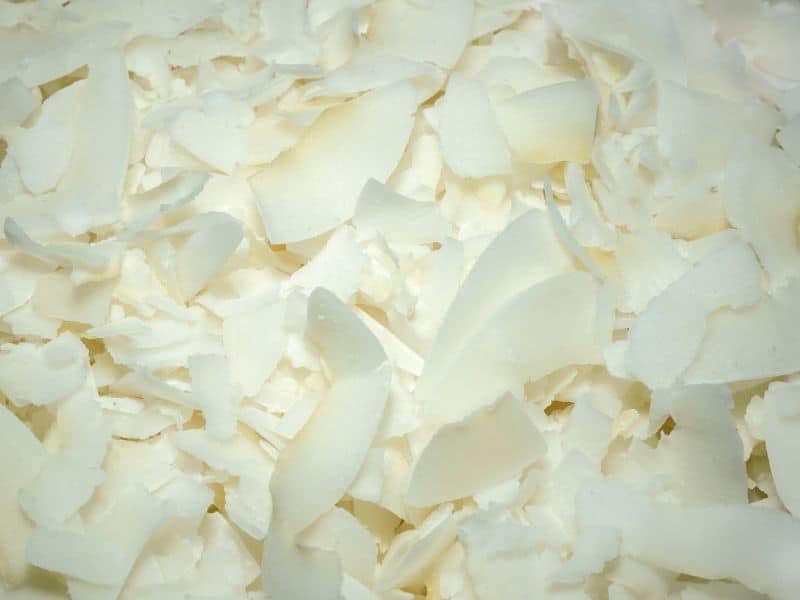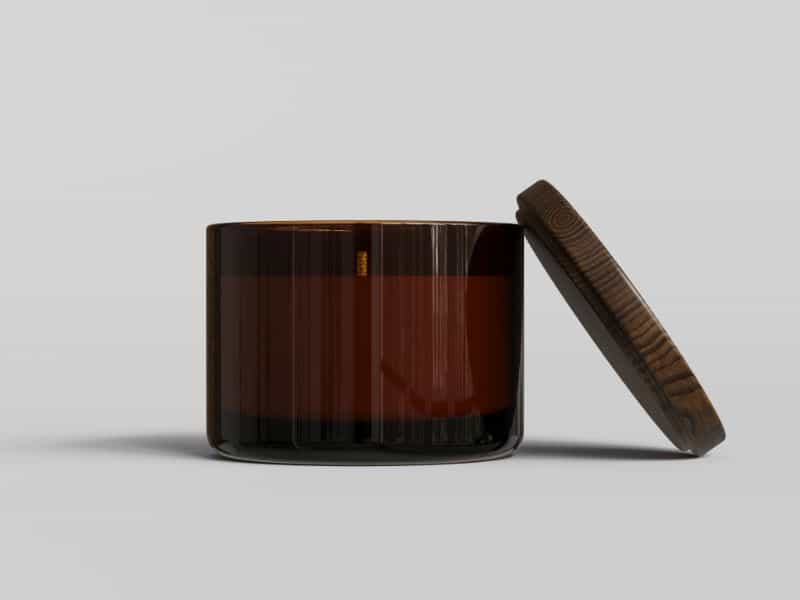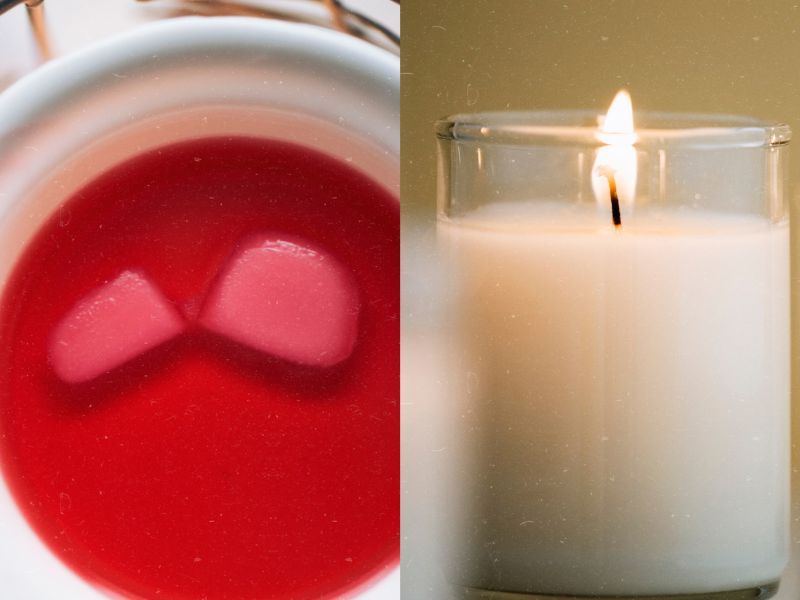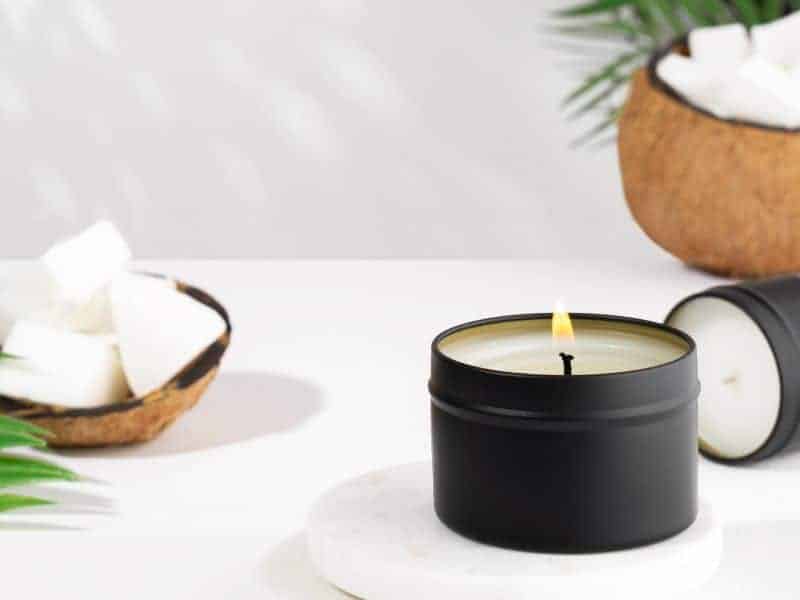If you’re making candles, knowing your waxes is a must. It’s not just about the pretty glow. The type of wax you choose affects everything: the burn time, the scent throw, and even the look of the candle itself. It can be a bit overwhelming, with so many types out there. But don’t worry, we’re here to help.
There are four major players in the wax game: paraffin, palm, beeswax, and soy. Each one has its own unique characteristics, and understanding them can help you make an informed choice. So whether you’re a professional candle maker or a DIY enthusiast, getting to know your waxes can really pay off.
In this guide, we’ll take a deep dive into each of these wax types. And we’ll shine a special spotlight on my favorite – soy wax. We’ll look at its benefits, and why it might just be the best choice for your candles.
Understanding Candle Wax Types
Paraffin Wax
Paraffin wax is the old faithful of candle waxes. It’s been around since the mid-19th century. It’s derived from petroleum, and it’s known for its excellent scent throw and smooth finish.
Paraffin wax has a rich history. It was first produced commercially in 1867. Since then, it’s been a staple in homes worldwide, lighting up rooms and filling them with delightful fragrances.
However, there are some issues with paraffin wax that you should know about. And that brings us to our next point.
You might have heard that paraffin wax is toxic. The good news is, research suggests otherwise. Burning paraffin wax candles does not release harmful amounts of toxins into the air.
However, paraffin wax isn’t the most eco-friendly option. It’s derived from petroleum, which is a non-renewable resource. And burning paraffin wax can produce soot, a type of air pollutant.
Paraffin wax has a lot going for it. It’s affordable and readily available. It holds scents well, making it great for scented candles. And it gives candles a smooth, appealing finish.
On the downside, it’s not the most environmentally friendly option. And some people find that paraffin wax candles burn too quickly.
Palm Wax
Palm wax is derived from palm oil, a type of vegetable oil. It’s a relatively new addition to the candle world.
Palm wax is known for its beautiful crystalline finish. Candles made with palm wax often have a unique, feathery appearance. But there’s more to palm wax than meets the eye.
Palm production has a dark side. It’s a major cause of deforestation, especially in places like Indonesia and Malaysia. This deforestation threatens many species, including orangutans and tigers.
That’s not to say that all palm wax is bad. Some is sourced responsibly. But it can be hard to tell which is which.
As a consumer, you have a lot of power. By choosing responsibly sourced products, you can help reduce demand for non-sustainable palm oil.
This doesn’t mean you have to give up palm wax candles entirely. But it’s worth taking the time to research your options.
Beeswax
Beeswax is as natural as it gets. It’s produced by honey bees, and it’s been used in candles for thousands of years.
Beeswax candles have a lovely, subtle scent of their own. They give off a warm, honey-like fragrance, even when unscented. And their golden color can add a touch of natural beauty to any space.
One of the best things about beeswax candles is their air-purifying properties. They release negative ions when they burn. These ions can help cleanse the air, neutralizing pollutants.
This makes beeswax candles a great choice for anyone with allergies or sensitivities. It can also make your home feel fresher and more inviting.
While beeswax has many benefits, it also has a few drawbacks. The main one is cost. Beeswax is pricier than other types of wax. This is due to the labor-intensive process of harvesting it.
Another issue is tunneling. Beeswax candles can burn down the middle, leaving a ring of unburned wax around the edges. But with proper care, this can be avoided.
Soy Wax
Last but not least, we have soy wax. This is derived from soybeans, making it a renewable resource. It’s a relatively new player in the candle world, but it’s quickly gaining popularity.
Soy wax has a creamy, smooth appearance. It’s also biodegradable, making it a great choice for eco-conscious consumers.
There’s a lot to love about soy wax. For starters, it’s affordable. It’s also non-toxic, producing very little soot when burned.
Soy wax burns cleaner and cooler than paraffin wax. This means your candles will last longer. And you won’t have to worry about black soot marks on your walls or ceilings.
Soy wax is also known for its excellent scent throw. This is a term used to describe how well a candle disperses its fragrance. With soy wax, your whole room can be filled with scent.
And when it comes to burn time, soy wax really shines. It burns slower than paraffin wax, giving you more bang for your buck.
Why Choose Soy Wax?
When you compare soy wax to other types, it’s clear that it offers the best value. It’s affordable, eco-friendly, and long-lasting. Plus, it gives off a great scent throw.
If you love scented candles, soy wax is the way to go. It’s known for its excellent scent throw. This means it can fill a room with fragrance quickly and effectively.
Plus, because soy wax burns cooler, the scent is released gradually. This results in a more pleasing, less overpowering fragrance.
One of the biggest advantages of soy wax is its burn time. It burns slower than paraffin wax, meaning your candles will last longer.
This makes soy wax a cost-effective choice. While the upfront cost may be slightly higher, the longer burn time means you’ll save money in the long run.
Soy wax is also easy to work with, making it a great choice for homemade candles. It melts easily, and it’s less likely to cause burns if spilled.
It also adheres well to glass and other materials. This means your candles will look great, with a smooth, even finish.
Choosing the Right Candle for Your Needs
Different waxes can affect how a candle releases its fragrance. For example, paraffin wax tends to release fragrance quickly, while soy wax does so gradually.
When choosing a candle, consider how you want the fragrance to be released. If you prefer a strong, quick scent, paraffin might be the way to go. But if you prefer a gentle, long-lasting aroma, soy wax is your best bet.
The type of wax also affects the look of a candle. Paraffin wax can create a sleek, smooth finish. Beeswax has a natural golden hue and a slightly rough texture.
Soy wax, on the other hand, gives a creamy, smooth appearance. So, think about what style fits best with your home decor when choosing.
Lastly, consider the purpose of your candle. If you’re looking for a decorative piece, beeswax might be your best option due to its natural beauty.
For aromatherapy or relaxation, soy wax’s excellent scent throw and longer burn time would serve well. And for outdoor use, paraffin wax’s resistance to wind may be beneficial.
Frequently Asked Questions
The high demand for palm oil has led to massive deforestation, especially in countries like Indonesia and Malaysia. This habitat destruction threatens numerous endangered species.
Beeswax is more expensive due to the labor-intensive process of harvesting it from beehives. Also, the supply of beeswax is dependent on the health and population of bees.
Soy wax is derived from soybeans, making it a renewable and biodegradable resource. It’s known for its clean burn, minimal soot production, excellent scent throw, and longer burn time compared to paraffin wax.
Soy wax is known for its excellent scent throw, meaning it disperses fragrance well. This is due to its lower melting point, which allows the fragrance to be released gradually and last longer.
Different waxes have different textures and appearances. Paraffin wax can create a sleek, smooth finish, beeswax has a natural golden hue and a slightly rough texture, and soy wax gives a creamy, smooth appearance.
Conclusion
In conclusion, we’ve explored four popular types of candle wax: paraffin, palm, beeswax, and soy. Each has its own set of benefits and drawbacks.
Paraffin is affordable and has a great scent throw, but it’s less eco-friendly. Palm wax is hard and durable, but its production can be problematic. Beeswax purifies the air and offers a natural look, but it’s pricier. Soy wax is eco-friendly and cost-effective, with a great scent throw and longer burn time.
If you’re buying or making candles, we encourage you to consider soy wax. It’s a choice that’s good for your wallet, your health, and the environment.
Choosing the right candle wax can make a big difference. It affects the burn time, scent throw, cost, and environmental impact of your candles. So make your choice wisely, and enjoy the warm glow and lovely scent that a good candle can bring.






